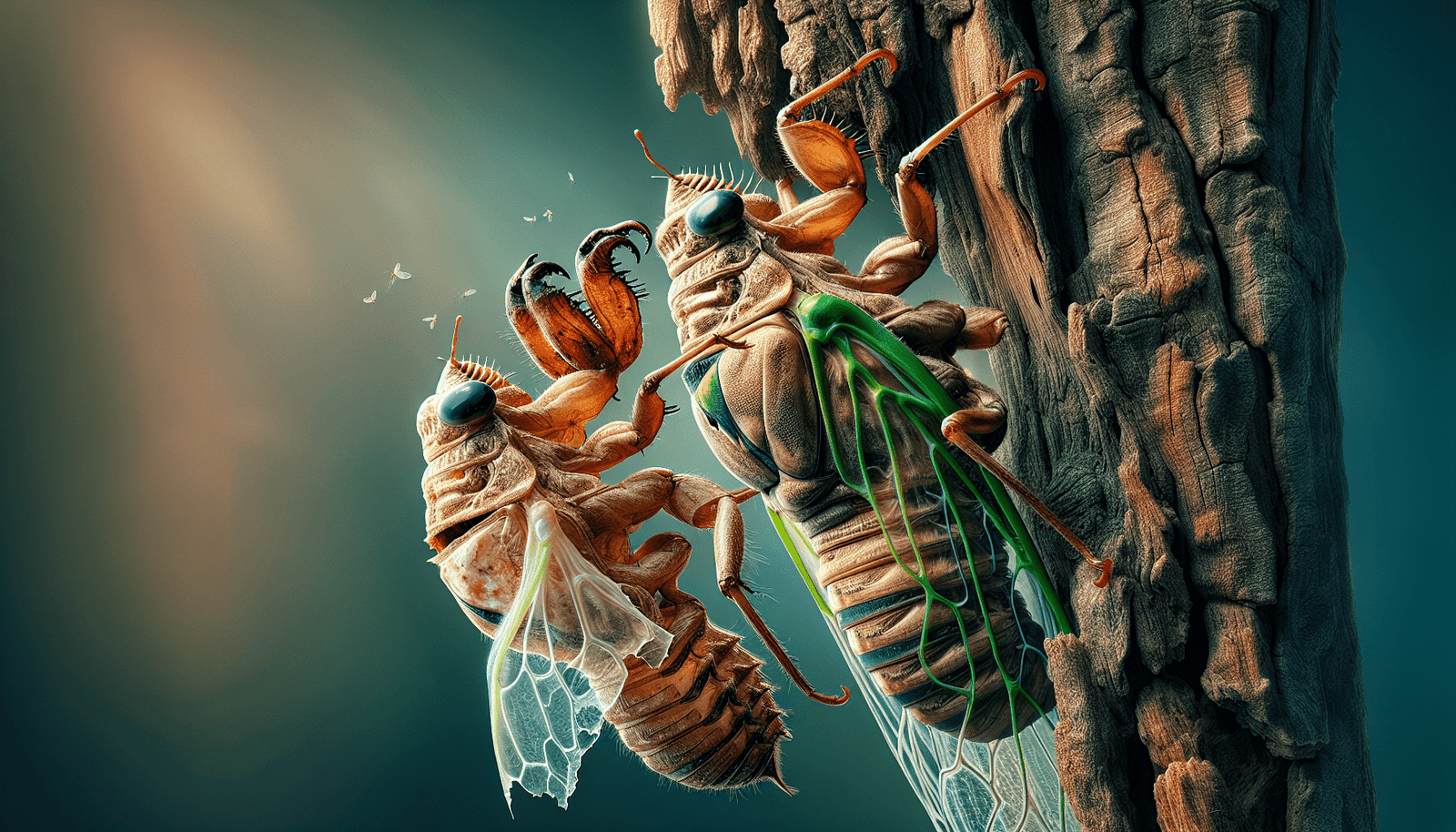Welcome to the fascinating world of cicadas! In this article, we will explore the lifecycle of these intriguing insects, from their underground existence as nymphs to their emergence as adult winged creatures. Through this informational post, you will gain a deeper understanding of the transformation process that occurs in the life of a cicada. Get ready to be amazed by the wonders of nature as we delve into The Cicada Lifecycle: From Nymph To Adult.
The Cicada Lifecycle: From Nymph to Adult
Have you ever wondered about the fascinating life cycle of cicadas? These unique insects have a captivating journey from nymph to adult that is truly remarkable. Let’s dive into the intricate process of how cicadas transform and emerge as adults in the natural world.
What are Cicadas?
Cicadas are insects belonging to the superfamily Cicadoidea, known for their unique life cycle and loud buzzing sounds. They are best recognized for their iconic red eyes, transparent wings, and distinctive calling songs that fill the air during the hot summer months. With over 3,000 species worldwide, cicadas are found in diverse habitats across the globe.
Friendly Tip: Next time you hear the buzzing sound of cicadas during the summer, take a moment to appreciate the fascinating creatures behind the symphony of nature.
Lifecycle of Cicadas
The life cycle of cicadas is an incredible journey that begins beneath the ground as nymphs and culminates in a remarkable emergence as adults. From egg to nymph to adult, the transformation of cicadas is a marvel of nature that unfolds over several years before they embark on their final stage in adulthood.
Friendly Tip: The next time you hear the rhythmic chirping of cicadas in the woods or gardens, remember that they are part of a fascinating life cycle that has been perfected by evolution over millions of years.
Egg Stage
The lifecycle of a cicada begins when the female cicadas lay their eggs in the bark of trees or woody plants. The female uses her sharp ovipositor to create small egg chambers where she deposits her eggs, which then hatch after a period of time. The eggs are typically laid in rows, and each female can lay hundreds of eggs during her lifetime.
Friendly Tip: Imagine the tiny eggs nestled in the bark of trees, waiting to hatch into nymphs that will eventually emerge as adult cicadas. It’s a beautiful reminder of the delicate balance of nature.
Nymph Stage
After the eggs hatch, the young cicadas, known as nymphs, drop to the ground and burrow into the soil to begin their subterranean journey. Nymphs have powerful front legs adapted for digging, allowing them to create tunnels beneath the surface where they feed on the sap of plant roots for nourishment.
Friendly Tip: The nymph stage is a crucial period of growth and development for cicadas, as they undergo several molts underground before they are ready to emerge into the world above.
Molting Process
As nymphs grow larger, they shed their exoskeleton in a process called molting to accommodate their increasing size. Cicada nymphs molt several times during their underground stay, shedding their old exoskeleton to reveal a new, larger version underneath. Each molt marks a new instar, or stage in their development, bringing them closer to adulthood.
Friendly Tip: Witnessing a cicada nymph molt underground is a rare sight, but a fascinating process that showcases the resilience and adaptability of these remarkable creatures.
Emergence as Adults
After spending years underground, cicada nymphs are ready to emerge as adults in one of nature’s most spectacular events. When the soil temperature reaches a certain threshold, the nymphs dig their way to the surface and climb onto nearby vegetation to undergo their final molt.
Friendly Tip: If you happen to come across a cicada nymph emerging from its exoskeleton to reveal its adult form, take a moment to marvel at the incredible transformation that has taken place to bring this creature into the world.
Adult Stage
As the cicada emerges from its nymph form, it undergoes a physical transformation to become an adult with its iconic features. The wings of the adult cicada are still soft and fragile at first, but they quickly expand and harden, enabling the insect to take flight and explore its surroundings.
Friendly Tip: The sight of adult cicadas buzzing around trees and shrubs can be a mesmerizing experience, offering a glimpse into the vibrant and dynamic world of these unique insects.
Reproduction and Life Cycle Completion
Once cicadas reach adulthood, their primary goal is to reproduce and ensure the survival of the next generation. Male cicadas produce loud calling songs to attract females for mating, forming large groups that create a cacophony of buzzing sounds in the summer. After mating, female cicadas lay their eggs in trees, completing the cycle of life for another generation of cicadas.
Friendly Tip: The sound of cicadas buzzing in unison during the hot summer months is a testament to the resilience and life-affirming spirit of these remarkable insects as they continue the cycle of life year after year.
Conclusion
The lifecycle of cicadas is a captivating journey that highlights the resilience, adaptability, and beauty of these remarkable insects in the natural world. From the egg stage to the emergence as adults, cicadas undergo a series of remarkable transformations that showcase the intricate and complex process of life in the wild. The next time you encounter the buzzing symphony of cicadas in the outdoors, take a moment to appreciate the incredible lifecycle that has brought these unique creatures into the world.
